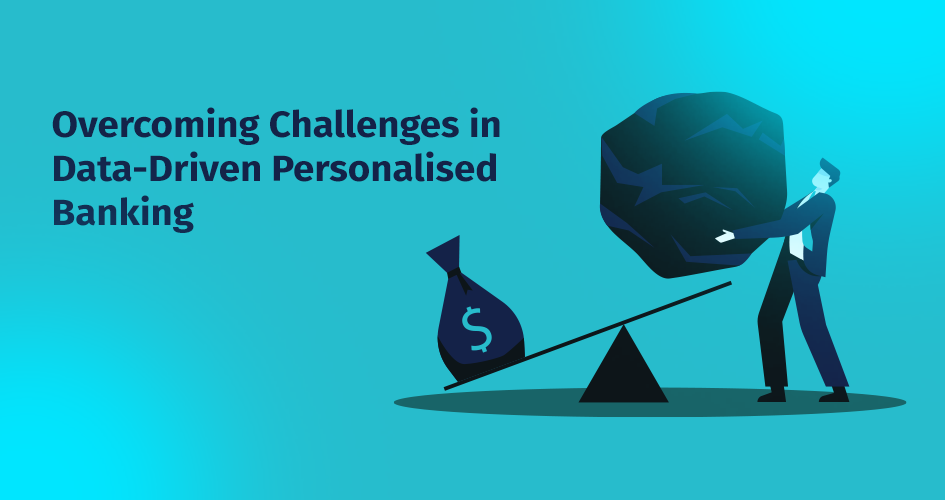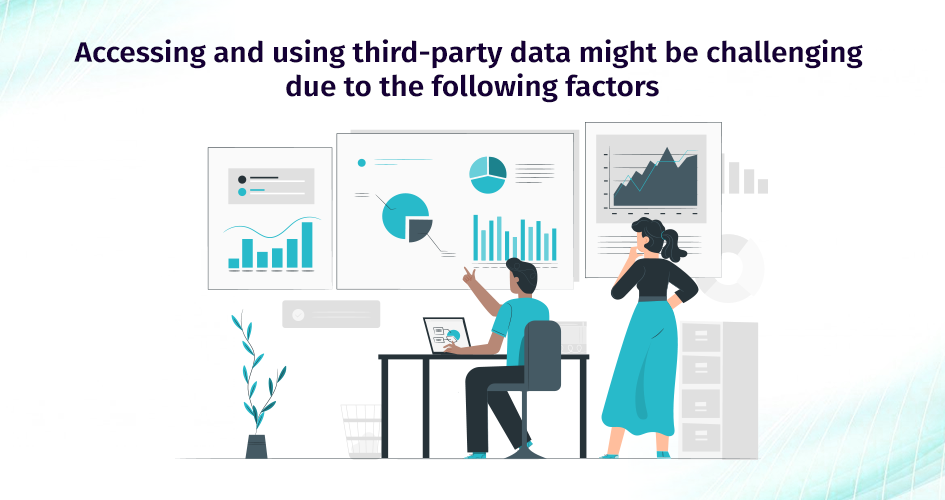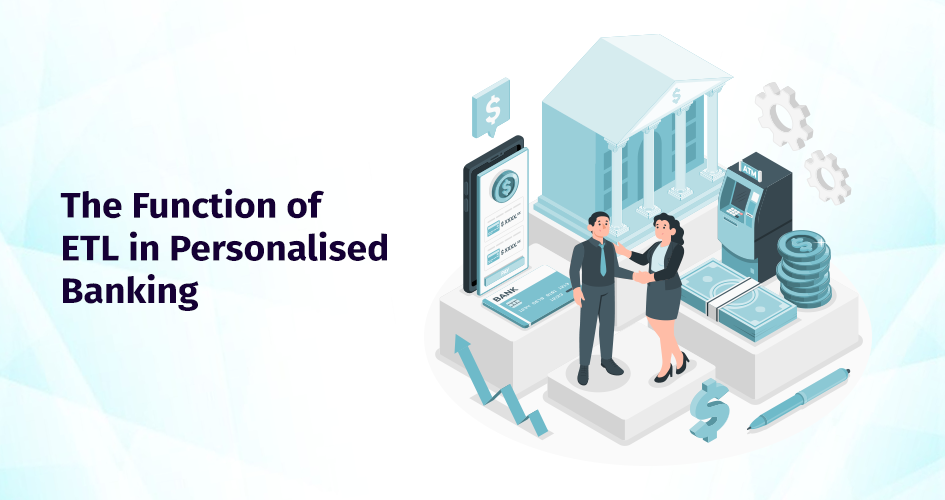
How Do Banks Use Personalized Banking?
Banking services are an absolute necessity in the twenty-first century. Large purchases are impossible to complete without them. Comfort is a fundamental component of this procedure. It is universally anticipated that these routine activities maintain the highest standards imaginable. The purpose of this blog is to examine so-called personalized finance. The utilization of standardized computerized services enables the transformation of each individual’s online banking encounter into a customized opportunity.

Targeted Product Recommendations
Banks analyse consumer spending habits and provide personalised suggestions for credit cards, loans, or investment products that are in line with the customer’s financial objectives.
Consider a consumer who regularly shops at grocery stores and spends a considerable amount of their income on groceries. The bank would review this customer’s transaction history to determine their spending habits. Based on this information, they may recommend a credit card that provides cashback or incentives exclusively for supermarket purchases. This personalised recommendation not only helps the consumer maximise their savings, but it also improves their relationship with the bank.

Custom Marketing Campaigns
Banks tailor their marketing campaigns by distributing tailored offers depending on their clients’ transaction history and preferences. For example, a customer who travels regularly may be offered travel insurance or foreign currency services.
Consider a consumer who extensively uses their credit card to purchase flights and motels. A bank using personalized banking would examine this customer’s transaction history to determine their travel-related charges. Armed with this knowledge, the bank might design its marketing campaigns to provide customers with exclusive travel benefits such as discounted travel insurance or advantageous foreign exchange rates. The bank improves the customer’s experience and increases the possibility that they will use the bank’s services by delivering personalised offers that are tailored to their specific interests.

Personalised customer service.
Banks leverage consumer data to create personalised customer care experiences. For example, if a customer calls the bank’s hotline, they will be sent to a person who specialises in their particular financial needs.
Consider a customer who has recently started a small business and wants advice on handling their funds. With personalised banking, when this customer calls the bank’s hotline, they are routed to a representative who specialises in aiding small company owners. This representative would have a thorough awareness of the issues and possibilities that small businesses encounter, allowing them to provide personalised advice and support to customers.

Overcoming Challenges in Data-Driven Personalised Banking
While data-driven banking provides various advantages, it also has drawbacks. Banks must address these hurdles properly in order to successfully implement their initiatives.
Legacy infrastructure: Older data processing systems may suffer from:
Using Unstructured Data: The inability to interpret and extract insights from constantly rising unstructured and alternative data collections.
Open Data Sharing: Inadequate capabilities for open data sharing limit collaboration and integration with other sources.
Financial institutions should invest in modernising their infrastructure to handle unstructured data more efficiently. Upgrading data integration systems and implementing advanced analytics tools can help with this approach. Furthermore, developing collaborations and embracing open APIs can aid in smooth integration with external sources.
Strict Data Regulation:
Growing concerns about data breaches have resulted in:
Consumer Caution: Due to high-profile cases of data theft and breaches, consumers are more hesitant to share personal information.
Regulatory Compliance Burden: Stricter requirements necessitate more comprehensive safeguards to protect client information, which increases operational complexity and costs.
It is critical to implement strong data protection methods, such as sophisticated encryption and multi-factor authentication. Banks should also conduct frequent audits of data access and invest in monitoring systems to verify compliance. Transparent communication about data privacy regulations is critical for establishing confidence and reassuring consumers about the security of their information.

Accessing and using third-party data might be challenging due to the following factors:
Disjointed Tools: Fragmented tools and systems make it difficult to undertake real-time analytics and democratise financial decisions.
Banks can diversify their data sources by limiting their reliance on a single vendor or technology. Integrating unified analytics systems and using standardised tools across business units helps improve data availability and provides real-time analytics for better decision-making.
Data silos present internal issues, including:
Complex workflows: Highly intricate processes impede collaboration and data flow.
Disparate Technologies: Using several technologies across different business divisions results in data silos, which prevents unified insights and decision-making.
Banks should prioritise streamlining procedures by establishing centralised data management solutions. Integrating technologies across departments and cultivating a culture of data sharing and cooperation can help to break down silos, resulting in better data flow and unified insights for decision-making.

The Function of ETL in Personalised Banking
ETL is the process of extracting data from multiple sources, converting it to a familiar format, and loading it into a target system. ETL is critical in personalised banking since it allows for data-driven decision-making and provides consumers with personalised experiences.
Extract
The extraction phase entails collecting customer-centric data from various sources. This procedure entails extracting critical information from internal systems, including transaction logs, customer databases, and account histories.
External sources play a significant role in enriching this data set. These sources could include social media sites, where people can interact with financial organisations or express preferences that can help shape personalised services. Furthermore, data from credit bureaus and other financial institutions can provide insights into credit histories, loan responsibilities, and other pertinent financial behaviours, significantly contributing to a customer’s overall financial profile.
The retrieved data serves as the foundation for numerous analytics and machine learning algorithms.
Transform
During the cleansing process, data is carefully inspected to identify and correct any inconsistencies, errors, or duplication. For example, if a customer’s name is misspelt in one source, the ETL process can be configured to ensure that all relevant datasets include consistent customer information. This attention to detail is critical in personalised banking, as even little inaccuracies might result in inaccurate recommendations or judgements.
is another necessary stage in the ETL process. It entails combining information from several sources. Integration can be time-consuming, particularly when dealing with significant amounts of data. However, ETL technologies like Datavision have evolved tremendously, making integration more efficient and easier.
During the transformation process, businesses might add enrichment as an extra step. It entails supplementing the data with other information to create a more complete picture. For example, demographic information such as age, gender, and geography can be added to customer records to improve segmentation and targeting.
Load
Finally, the modified data is stored in a centralised data warehouse or data mart, where it may be analysed and used to support personalised banking activities. This consolidated data allows banks to acquire a 360-degree view of their customers, resulting in valuable insights and personalised suggestions.
How Can Datavision help?
We assist various financial institutions and global banks on their digital transformation journey. Our one-of-a-kind approach, which combines people, process, and technology, expedites the delivery of superior results to our clients and drives excellence. Several reputed companies leverage our proprietary suite of business excellence tools and services to unlock new growth levers and unparalleled ROI.
Datavision stands proudly as a prominent banking software solutions provider, recognized for our unwavering commitment to excellence in the industry. We have earned our esteemed reputation by consistently delivering cutting-edge core banking software, catering to the needs of both retail and corporate banking software sectors. At Datavision, our mission is clear: to provide our clients with the best banking software products, ensuring that they stay ahead in an ever-evolving financial landscape. We take pride in serving our prestigious clients and look forward to continuing our journey of innovation and excellence.
Our portfolio of banking software product and services include:
Core Banking Solutions: | FinNext Core | Banking: | FinTrade | EasyLoan | MicroFin |
Digital Banking Solutions: | IBanc | MobiBanc | MBranch | FinTab | FinSight |
Risk & Compliance: |FinTrust |
Want to know how our team of experts at Datavision provides customizable, scalable, and cost-effective banking software products and solutions to our esteemed clients? Visit us for more information.